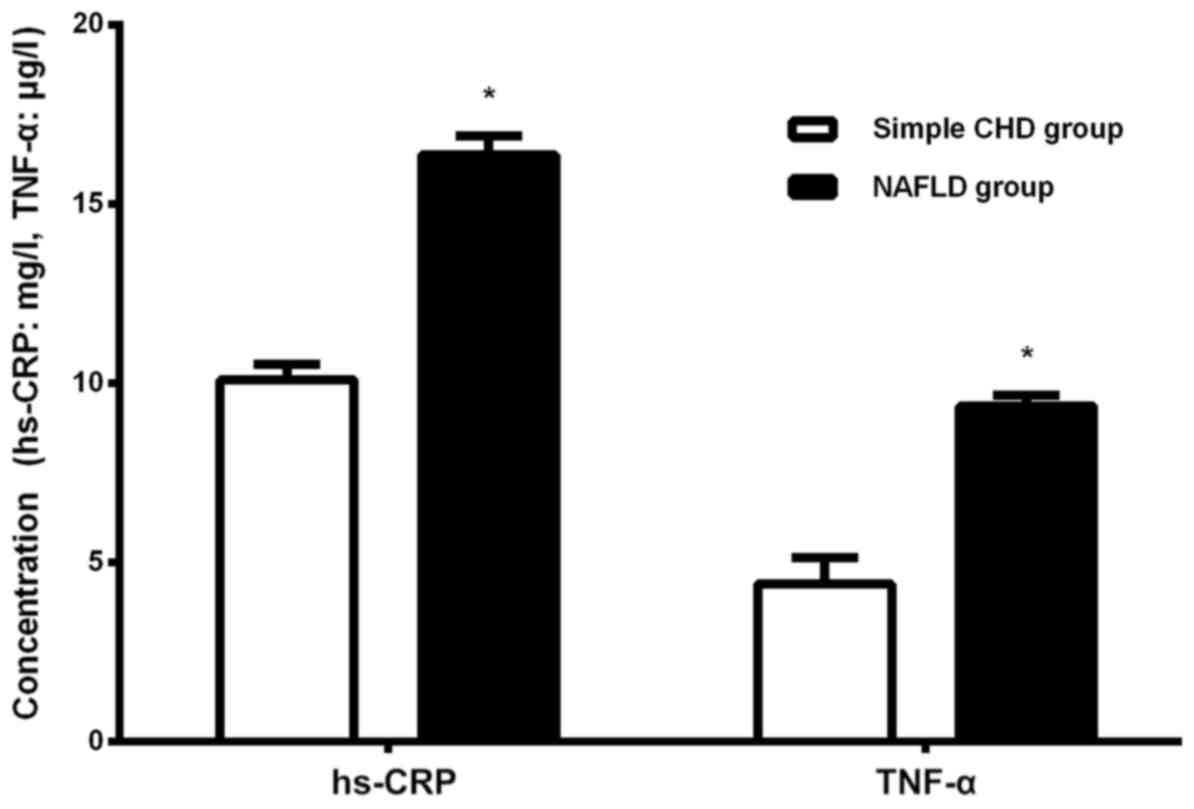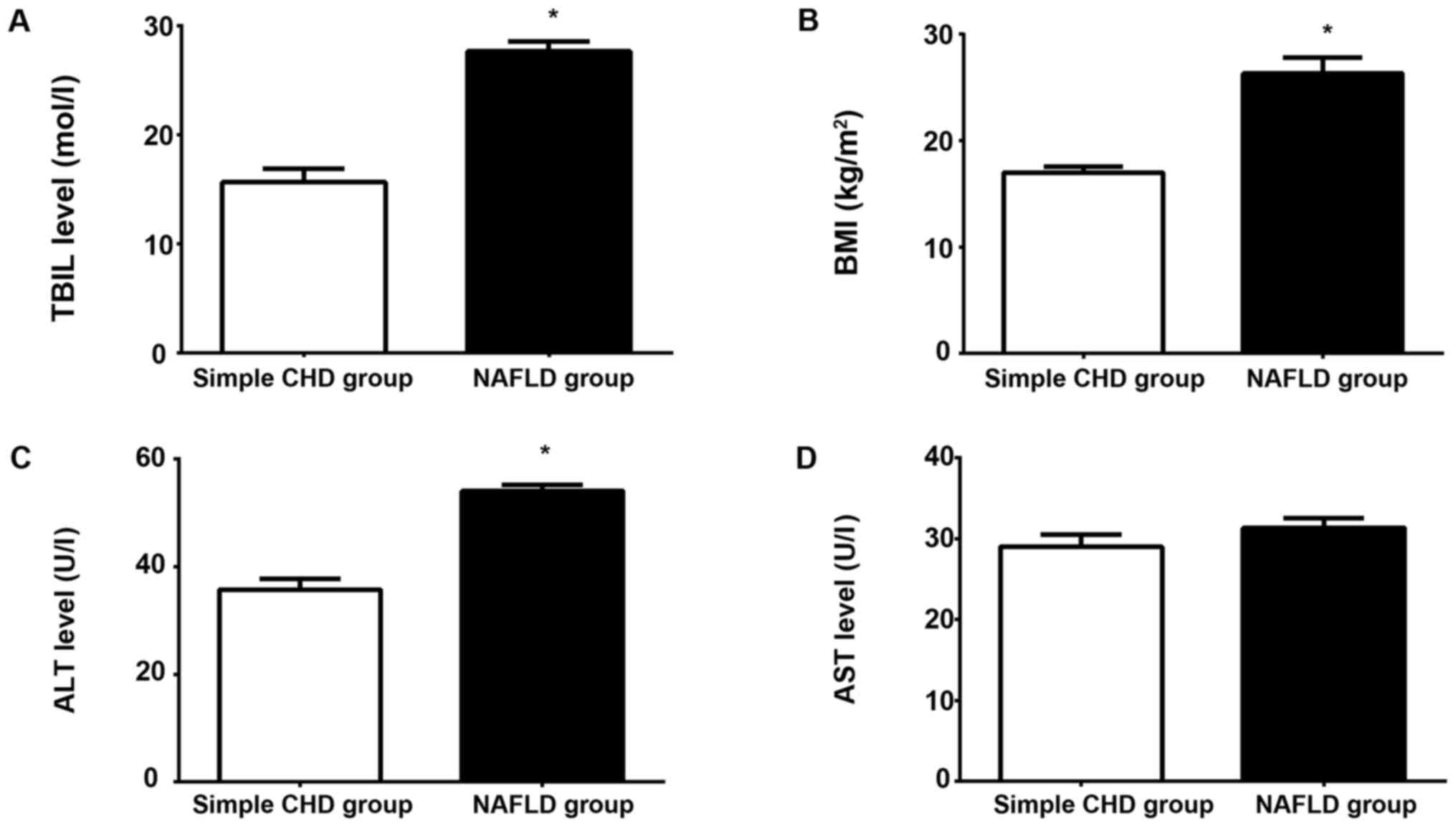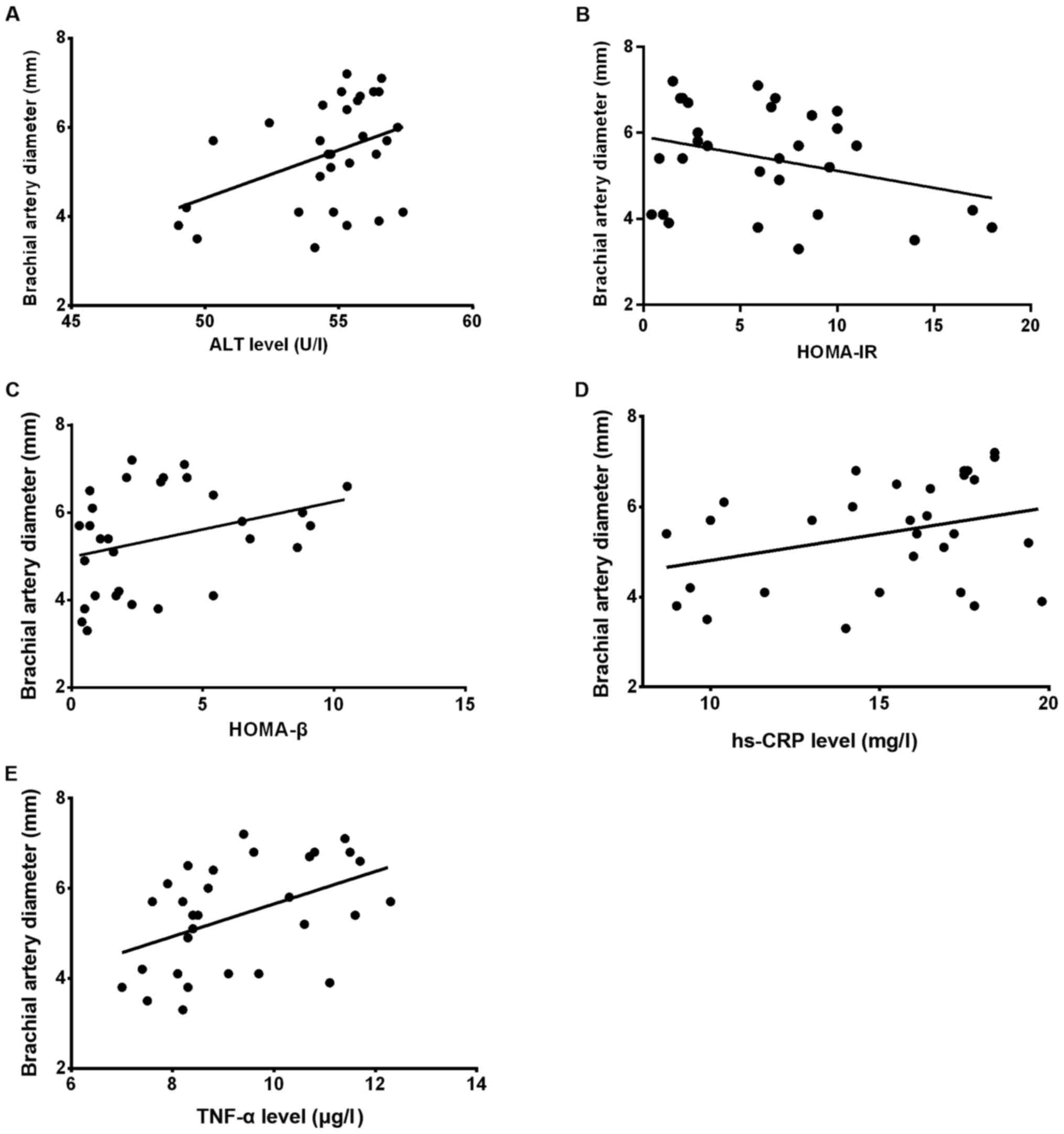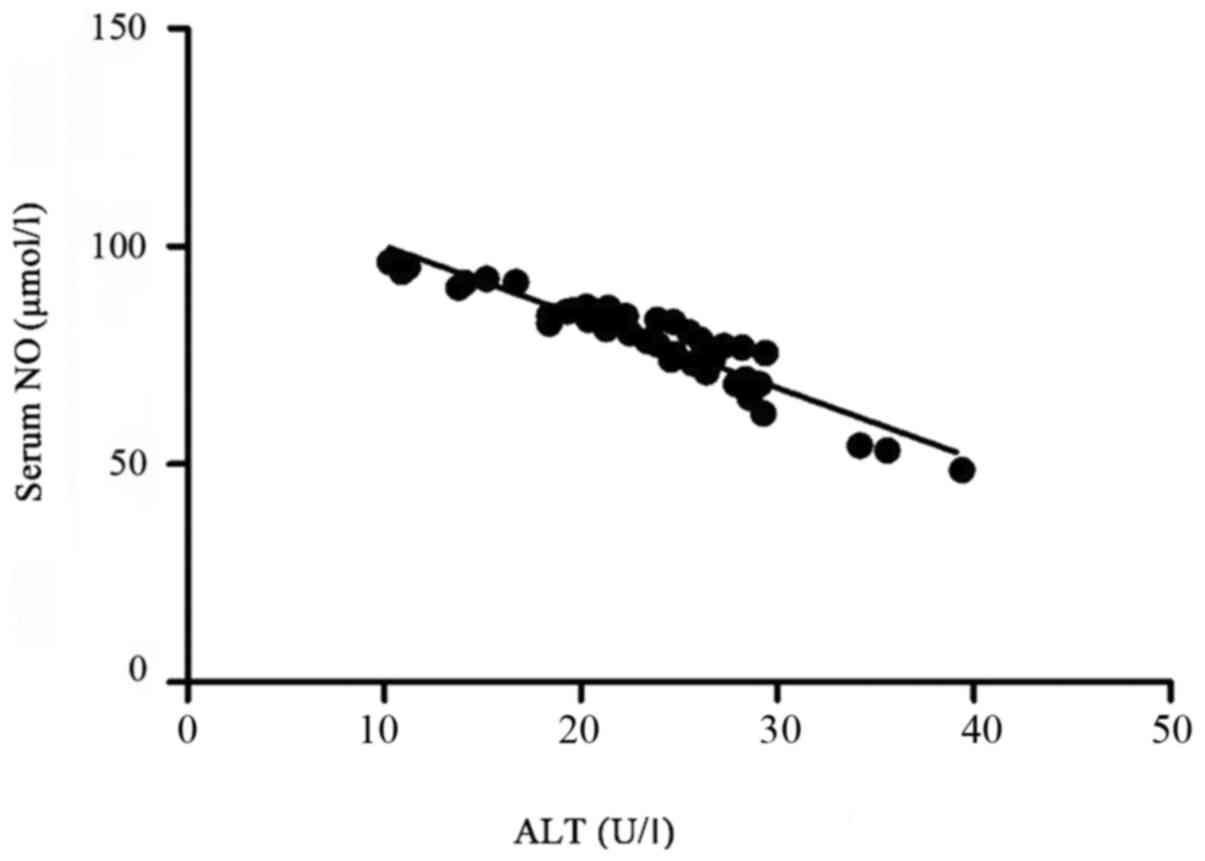|
1
|
Szczepaniak LS, Babcock EE, Schick F,
Dobbins RL, Garg A, Burns DK, McGarry JD and Stein DT: Measurement
of intracellular triglyceride stores by H spectroscopy: validation
in vivo. Am J Physiol. 276:E977–E989. 1999.PubMed/NCBI
|
|
2
|
Browning JD, Szczepaniak LS, Dobbins R,
Nuremberg P, Horton JD, Cohen JC, Grundy SM and Hobbs HH:
Prevalence of hepatic steatosis in an urban population in the
United States: Impact of ethnicity. Hepatology. 40:1387–1395. 2004.
View Article : Google Scholar : PubMed/NCBI
|
|
3
|
Day CP: Pathogenesis of steatohepatitis.
Best Pract Res Clin Gastroenterol. 16:663–678. 2002. View Article : Google Scholar : PubMed/NCBI
|
|
4
|
Chalasani N, Younossi Z, Lavine JE, Diehl
AM, Brunt EM, Cusi K, Charlton M and Sanyal AJ: American
Gastroenterological Association; American Association for the Study
of Liver Diseases; American College of Gastroenterologyh: The
diagnosis and management of non-alcoholic fatty liver disease:
practice guideline by the American Gastroenterological Association,
American Association for the Study of Liver Diseases, and American
College of Gastroenterology. Gastroenterology. 142:1592–1609. 2012.
View Article : Google Scholar : PubMed/NCBI
|
|
5
|
Fracanzani AL, Valenti L, Bugianesi E,
Andreoletti M, Colli A, Vanni E, Bertelli C, Fatta E, Bignamini D,
Marchesini G, et al: Risk of severe liver disease in nonalcoholic
fatty liver disease with normal aminotransferase levels: a role for
insulin resistance and diabetes. Hepatology. 48:792–798. 2008.
View Article : Google Scholar : PubMed/NCBI
|
|
6
|
Kotronen A, Juurinen L, Hakkarainen A,
Westerbacka J, Cornér A, Bergholm R and Yki-Järvinen H: Liver fat
is increased in type 2 diabetic patients and underestimated by
serum alanine aminotransferase compared with equally obese
nondiabetic subjects. Diabetes Care. 31:165–169. 2008. View Article : Google Scholar : PubMed/NCBI
|
|
7
|
Gastaldelli A, Cusi K, Pettiti M, Hardies
J, Miyazaki Y, Berria R, Buzzigoli E, Sironi AM, Cersosimo E,
Ferrannini E, et al: Relationship between hepatic/visceral fat and
hepatic insulin resistance in nondiabetic and type 2 diabetic
subjects. Gastroenterology. 133:496–506. 2007. View Article : Google Scholar : PubMed/NCBI
|
|
8
|
Bellentani S, Saccoccio G, Masutti F,
Crocè LS, Brandi G, Sasso F, Cristanini G and Tiribelli C:
Prevalence of and risk factors for hepatic steatosis in Northern
Italy. Ann Intern Med. 132:112–117. 2000. View Article : Google Scholar : PubMed/NCBI
|
|
9
|
Bhatia LS, Curzen NP, Calder PC and Byrne
CD: Non-alcoholic fatty liver disease: a new and important
cardiovascular risk factor? Eur Heart J. 33:1190–1200. 2012.
View Article : Google Scholar : PubMed/NCBI
|
|
10
|
Sunny NE, Parks EJ, Browning JD and
Burgess SC: Excessive hepatic mitochondrial TCA cycle and
gluconeogenesis in humans with nonalcoholic fatty liver disease.
Cell Metab. 14:804–810. 2011. View Article : Google Scholar : PubMed/NCBI
|
|
11
|
Souza MR, Diniz MF, Medeiros-Filho JE and
Araújo MS: Metabolic syndrome and risk factors for non-alcoholic
fatty liver disease. Arq Gastroenterol. 49:89–96. 2012. View Article : Google Scholar : PubMed/NCBI
|
|
12
|
Chapman MJ, Ginsberg HN, Amarenco P,
Andreotti F, Borén J, Catapano AL, Descamps OS, Fisher E, Kovanen
PT, Kuivenhoven JA, et al: European Atherosclerosis Society
Consensus Panel: Triglyceride-rich lipoproteins and high-density
lipoprotein cholesterol in patients at high risk of cardiovascular
disease: evidence and guidance for management. Eur Heart J.
32:1345–1361. 2011. View Article : Google Scholar : PubMed/NCBI
|
|
13
|
Sanyal AJ, Campbell-Sargent C, Mirshahi F,
Rizzo WB, Contos MJ, Sterling RK, Luketic VA, Shiffman ML and Clore
JN: Nonalcoholic steatohepatitis: Association of insulin resistance
and mitochondrial abnormalities. Gastroenterology. 120:1183–1192.
2001. View Article : Google Scholar : PubMed/NCBI
|
|
14
|
Yki-Järvinen H: Liver fat in the
pathogenesis of insulin resistance and type 2 diabetes. Dig Dis.
28:203–209. 2010. View Article : Google Scholar : PubMed/NCBI
|
|
15
|
Fabbrini E, Magkos F, Mohammed BS, Pietka
T, Abumrad NA, Patterson BW, Okunade A and Klein S: Intrahepatic
fat, not visceral fat, is linked with metabolic complications of
obesity. Proc Natl Acad Sci USA. 106:15430–15435. 2009. View Article : Google Scholar : PubMed/NCBI
|
|
16
|
Bugianesi E, Gastaldelli A, Vanni E,
Gambino R, Cassader M, Baldi S, Ponti V, Pagano G, Ferrannini E and
Rizzetto M: Insulin resistance in non-diabetic patients with
non-alcoholic fatty liver disease: sites and mechanisms.
Diabetologia. 48:634–642. 2005. View Article : Google Scholar : PubMed/NCBI
|
|
17
|
Wald D, Teucher B, Dinkel J, Kaaks R,
Delorme S, Boeing H, Seidensaal K, Meinzer HP and Heimann T:
Automatic quantification of subcutaneous and visceral adipose
tissue from whole-body magnetic resonance images suitable for large
cohort studies. J Magn Reson Imaging. 36:1421–1434. 2012.
View Article : Google Scholar : PubMed/NCBI
|
|
18
|
Lomonaco R, Ortiz-Lopez C, Orsak B, Webb
A, Hardies J, Darland C, Finch J, Gastaldelli A, Harrison S, Tio F,
et al: Effect of adipose tissue insulin resistance on metabolic
parameters and liver histology in obese patients with nonalcoholic
fatty liver disease. Hepatology. 55:1389–1397. 2012. View Article : Google Scholar : PubMed/NCBI
|
|
19
|
Machado MV, Ferreira DM, Castro RE,
Silvestre AR, Evangelista T, Coutinho J, Carepa F, Costa A,
Rodrigues CM and Cortez-Pinto H: Liver and muscle in morbid
obesity: the interplay of fatty liver and insulin resistance. PLoS
One. 7:e317382012. View Article : Google Scholar : PubMed/NCBI
|
|
20
|
Gastaldelli A: Role of beta-cell
dysfunction, ectopic fat accumulation and insulin resistance in the
pathogenesis of type 2 diabetes mellitus. Diabetes Res Clin Pract.
93 Suppl 1:S60–S65. 2011. View Article : Google Scholar : PubMed/NCBI
|


















